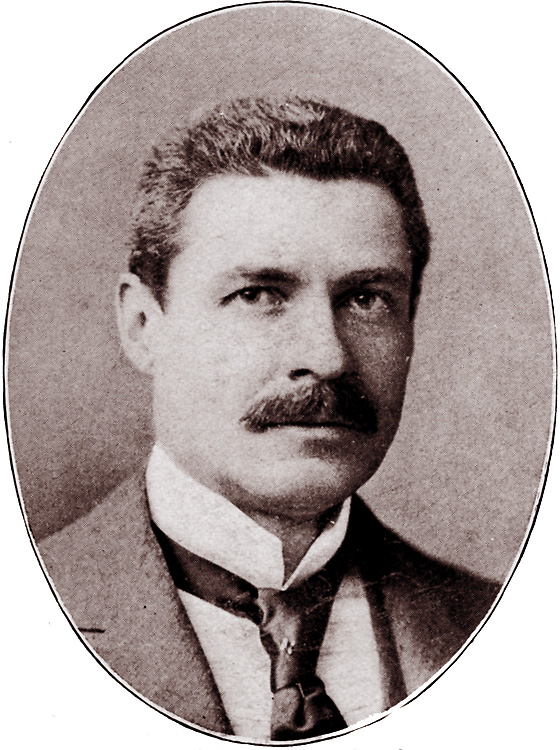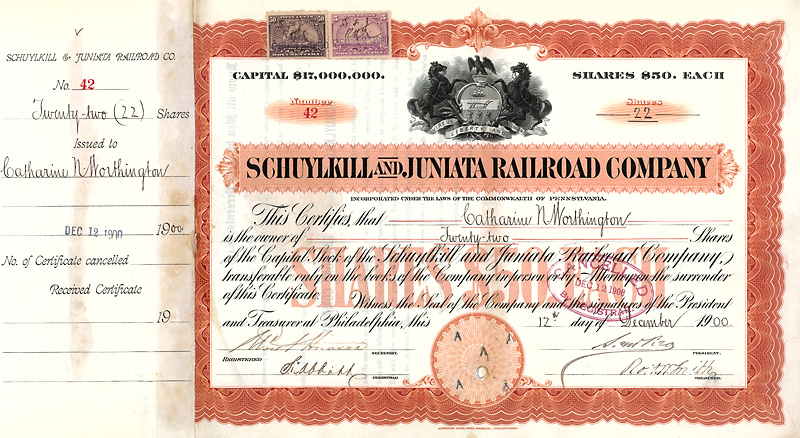|
Business Magnates, Industrialists, Railroad Tycoons, Capitalists, Financiers
|
||||
|
Samuel Rea
|
||||
 |
||||
|
Samuel Rea (1855-1929) was an American engineer and the 9th president of the Pennsylvania Railroad (1913–25). Samuel Rea began his vocational life as a clerk in a country store. In 1871, Samuel Rea began his connection with the Pennsylvania Railroad at 16. Except for an intermission from 1875 to 1879 (when he worked for the P&LE Railroad), he served continuously on the Pennsylvania Railroad until his retirement from office as President in 1925. By age 31, Rea was assistant engineer in the construction of chain suspension bridges over the Monongahela River at Pittsburgh. He began as a rodman in 1871, at a time when the Penn road had hardly outgrown its original (1846) charter which provided that it should extend from Harrisburg to Pittsburgh. Not only did he see the road pass through the greater part of the expansion which has made it a 12,000-mile system, but it was directly through his efforts that the Pennsylvania secured access to Manhattan. He planned a bridge across the Hudson from Jersey City to Manhattan. When other roads refused to cooperate, he went under instead of over the water and built the New York Tunnel Extension. Later he made an arrangement with the New York, New Haven & Hartford and built the Hell Gate Bridge, and still later got control of the Long Island Railroad and connected it to the Penn with tunnels under the East River. Finally, as head of the 12,000-mile system employing 250,000 men, he became one of the three or four dominating powers in American transportation. Rea was considered largely responsible for many features of the Esch-Cummins Transportation Act, whereby the railroads were returned to private control in 1920. In 1886, Samuel Rea became a member of the New York Stock Exchange—being the first seat held in the city of Pittsburgh. He remained a member for 12 years. In 1888, he published a book called “The Railways Terminating in London: With a Description of the Terminating Stations”. Samuel Rea was a member of the exclusive South Fork Fishing and Hunting Club, whose earthen dam failed in May 1889, causing the Johnstown Flood. After the Flood, Rea removed to Bryn Mawr, PA, to an estate called "Waverly Heights" designed by architect Addison Hutton; it now serves as Waverly Heights, a lifecare community in Gladwyne. Rea was reared in the Presbyterian faith and said he preferred reading Prof. Moffet’s translation of the Bible. Samuel Rea retired as President of the Pennsylvania Railroad system in 1925 at the age of 70, having served as President from 1913 to 1925. Under PRR president Alexander Cassatt in 1903, the PRR began tunnelling under the Hudson River to bring its trains into New York City for the first time. The project was completed under PRR president James McCrea, and Pennsylvania Station (New York) opened in 1911. It was built to accommodate as many as half a million daily passengers, and Samuel Rea, who became PRR president in 1913, found himself defending against charges that the station had been wastefully overbuilt. Time was to prove him right. By 1919 the station was accommodating almost thirty-five million a year, eclipsing Grand Central Terminal as the busiest New York station. Less than a decade later more than sixty million used it annually, enough to make it the most heavily used railroad station in all North America. By 1939 its yearly traffic had reached a then record level of almost sixty-six million passengers. |
||||
 |
||||
|
Stock certificate of the Schuylkill and Juniata Railroad Company, issued 1900, hand signed by Samuel Rea as president
|
||||
|